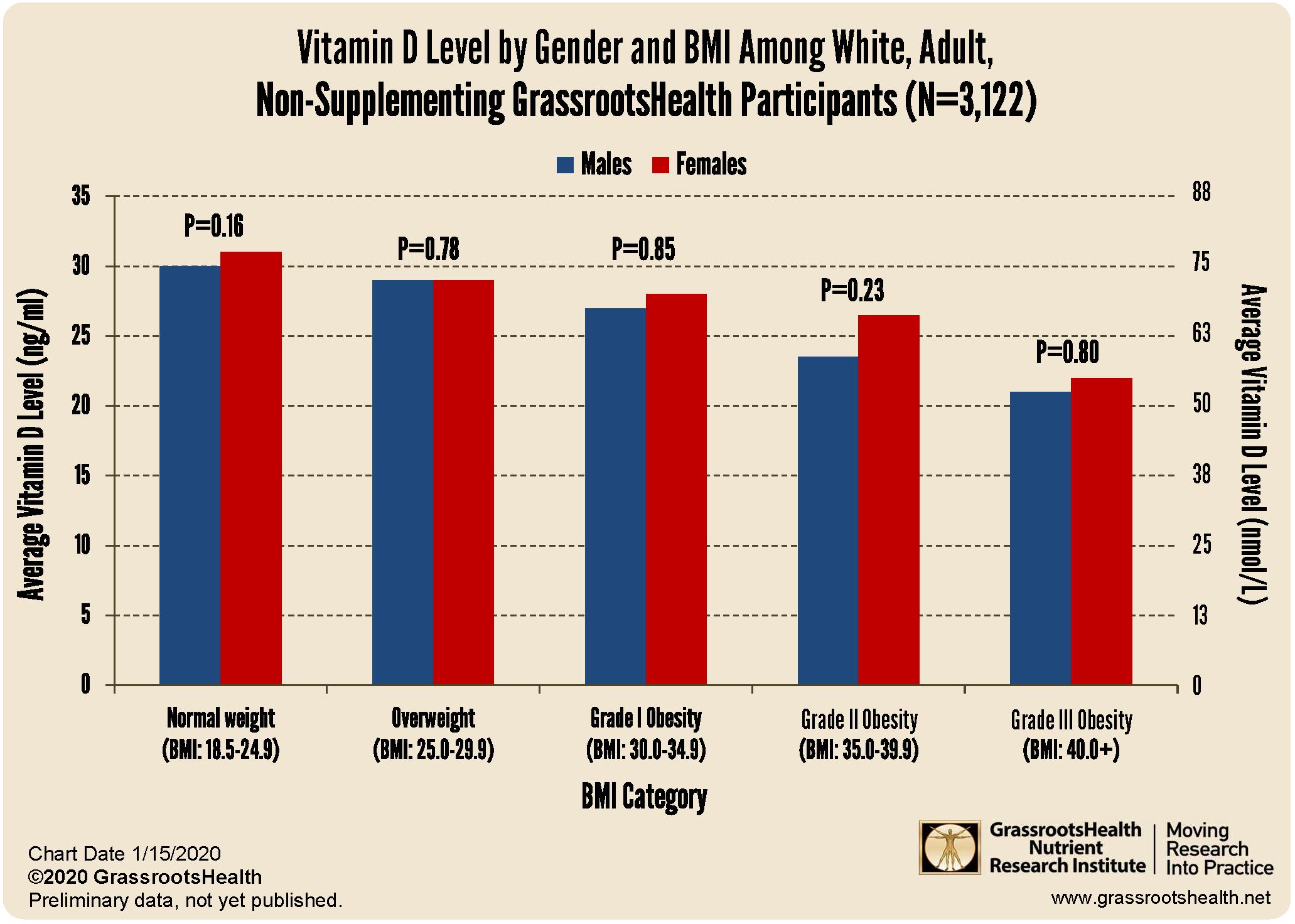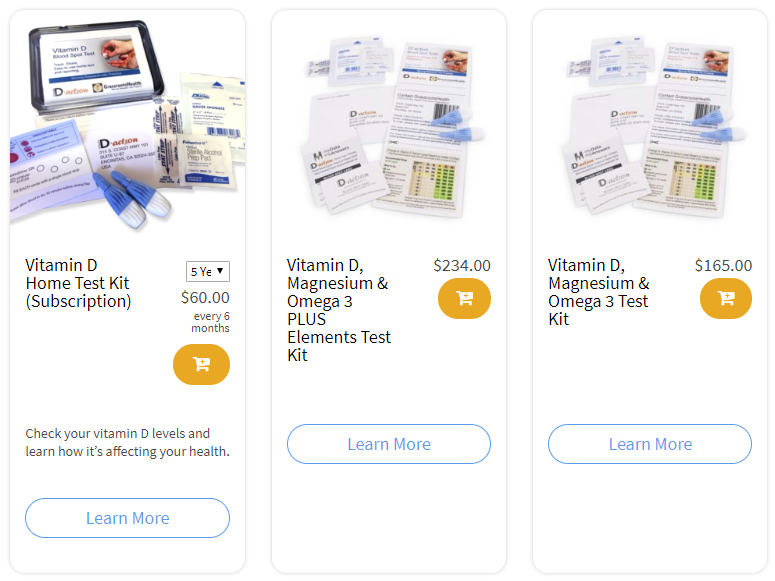Published on January 21, 2020
In a previous post, we highlighted results from a study that looked at vitamin D levels of non-supplementing adults living in the same area in Italy and who had similar sun exposure habits. The men in this study had a higher vitamin D level than the women in each BMI category. What do we see when we look at our own data?
Comparing Vitamin D Levels Between Males and Females by BMI Category in GrassrootsHealth
 Approximately 2/3 of the GrassrootsHealth participants are female, with the largest groups being middle- and older-aged females. A recent breakdown of our demographics can be seen here.
Approximately 2/3 of the GrassrootsHealth participants are female, with the largest groups being middle- and older-aged females. A recent breakdown of our demographics can be seen here.
Using a subgroup of GrassrootsHealth participants similar to the population in the Muscogiuri et al. study (white, non-supplementing adults), we compared vitamin D levels for males and females by BMI category. We actually found an opposite trend-slightly higher vitamin D levels for women in each BMI category, however, the differences between males and females were not statistically significant. There are known differences between the GrassrootsHealth population and the Muscogiuri et al. study population, such as country of residence and latitude, and others may exist, such as diet and sun exposure habits, that may account for this difference in results.
Although this trend seen among GrassrootsHealth was not statistically significant and does not represent the same trend as seen in the Muscogiuri study, it does more closely match the US National Health and Nutrition Examination Survey (NHANES) 2011-2014 data set for older adults, which shows an average vitamin D level of around 31 ng/ml (78 nmol/L) for males and 35 ng/ml (88 nmol/L) for females.
Why the Difference?
There are several factors that contribute to a person’s vitamin D level, such as sun exposure and geographical location, supplement intake, and some foods, as well as genetics, gastrointestinal issues, and current health status. For these reasons, it is important to test your level to see where yours is, without assuming your supplementation or lifestyle routine is getting you into your target level.
Don’t Assume Your Vitamin D Level is OK!
Make sure you know your vitamin D level, and take steps to keep it within a target of 40-60 ng/ml or 100-150 nmol/L! Through GrassrootsHealth Nutrient Research Institute, you can also test your essential elements magnesium, copper, zinc and selenium, toxins such as lead, mercury and cadmium, as well as your omega-3 levels, inflammation levels and thyroid stimulating hormone (TSH) level. Find out your levels today! Log on to the test selection page (click the link below) to get your tests and see for yourself if your levels can be improved.
Make sure you track your results before and after, about every 6 months!
Click Here to Access the Test Page
How can I track my nutrient intake and levels over time?
To help you track your supplement use and nutrient levels, GrassrootsHealth has created an online tracking system called myData-myAnswers. For each specific supplement, you can track what days you take it, how much, and many other details. This will help you know your true supplemental intake and what patterns of use work for you to reach and maintain optimum nutrient levels. Check it out today!








